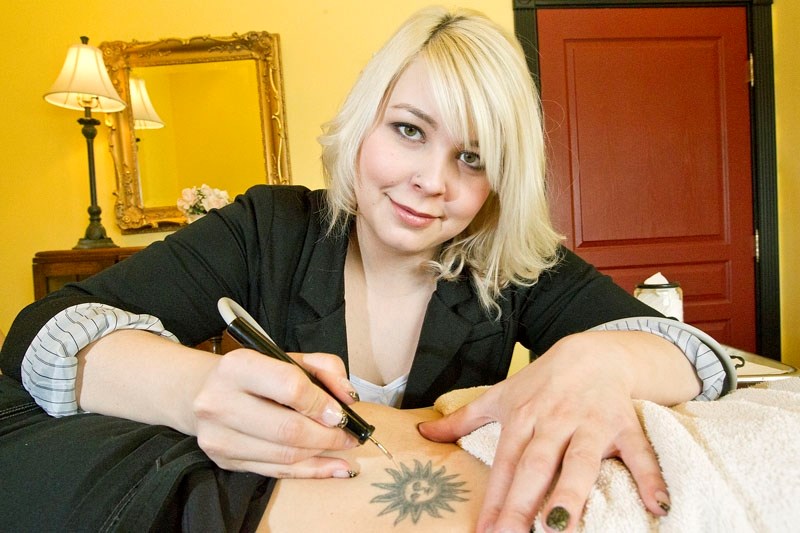At 16, Troy Ayers-Slupek thought that getting geometrical figures tattooed on his body was a good idea. He later suffered from remorse.
The tattoo has since been removed by a colleague, and Ayers-Slupek opened up his own tattoo store, Eye of the Lotus, in Edmonton.
Five years ago, he took a course to become a certified laser technician – now treating others who inked their body for the wrong reasons.
It may sound like an easy way to get rid of your ex’s name or a badly drawn mermaid. But laser therapy takes time, costs money and hurts, he said.
“I’d rather be honest with people and let them know what to expect,” he said. “Yes, it is painful, more painful than getting a tattoo.”
A recent Ipsos Reid poll conducted on behalf of Global Television said that two in 10 Canadians (22 per cent) have at least one tattoo on their body. About 11 per cent of Canadians have multiple tattoos.
One in 10 Canadians regrets getting a tattoo in the first place.
Prices for laser therapy vary from $100 to $500 a session, depending on the clinic and size of the tattoo. That also pays for the technology. Ayers-Slupek’s laser cost more than his first house, he said.
In comparison, getting a tattoo at his shop costs $65 an hour.
And depending on the size of the tattoo, it takes numerous treatments and up to one or two years for a tattoo to be removed.
Patricia Power, a clinical esthetician and permanent make-up artist at External Affairs Clinical Spa in St. Albert, admits the pain for her treatment is about 10 times worse than getting a tattoo.
Power uses electrocautery to remove small tattoos on people’s shoulders and backs – nothing larger than the palm of a hand. Most of them are wedding bands and husband’s names, and some permanent make-up mistakes.
“You should not get anyone’s name that isn’t your parents or your children’s. That’s what I usually tell people,” she said.
Electrocautery uses a small probe with an electric current to burn or destroy tissue. The treatment is commonly used in surgery to remove unwanted or harmful skin. Power said it heats the skin and brings the colour to the surface.
“We are causing trauma to the area where the tattoo is, causing a scab that pulls the pigment out,” she said.
“The scab falls off and then we do it again once (the skin) heals.”
Depending on the size of the tattoo, the treatment can take up to 15 minutes or half an hour per session. At $128 per 15 minutes, Power said the cost adds up quickly.
Permanent make-up mistakes are a little easier to correct, she said. She can colour over them, unless the eyeliner is below the line or bled out and looks like a bruise.
Ayers-Slupek said that many customers come for a tattoo removal with unrealistic expectations. They think they can rid themselves of the ink in one session.
Even then, most lasers remove only 95 per cent of the colour. Darker colours are easier to remove than lighter ones. Blues and greens are particularly difficult to take out of the skin.
“I have four different lasers so I can do all colours, but I know places that can only do certain colours,” he said.
Scarring from the therapy is less common nowadays. Modern lasers use shorter bursts of energy, causing less damage to the cells.
Edmonton dermatologist Barry Lycka said he does not treat patients more than every three to six months but the heat can still affect the skin.
“It really depends on the skill of the doctor and the type of the laser that is being used. In the old days before we had specific lasers, we had lasers that would cause a problem,” he said.
“You are adding damage to an area that is already damaged.”
He added that creams don’t work since the tattoo colour is part of the skin pigment and cannot be penetrated from the outside.
Lycka and Ayers-Slupek both work out of dermatology clinics and advise their patients to shop around for the right laser technician.




